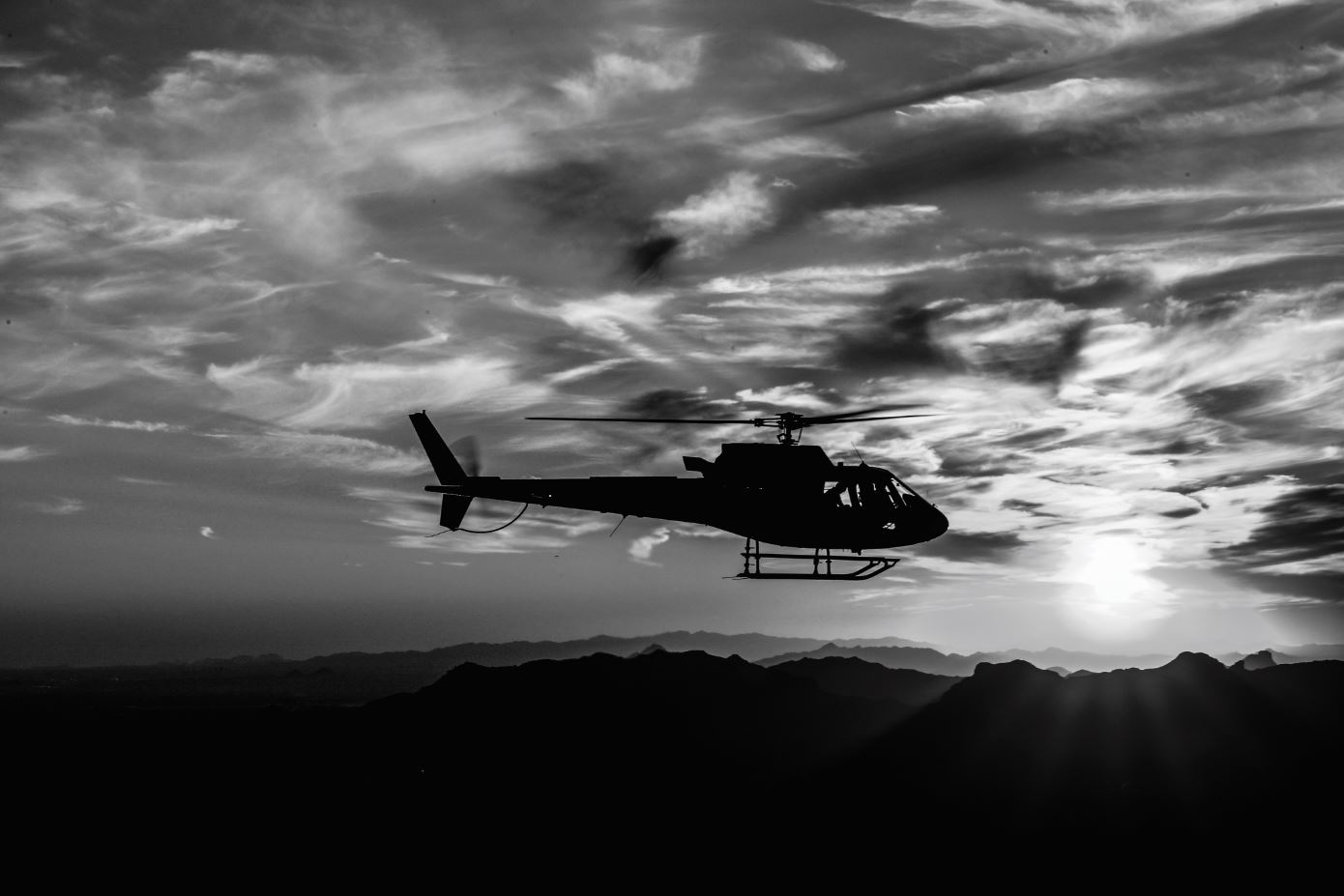Editor’s note: The following is a photo feature from the August/September issue of Vertical that has been adapted for verticalmag.com. Photos by Augusto Herrera
What makes a helicopter fuel system crash-resistant? Flexible fuel bladders are part of the equation, but the ability of a tank to withstand crashes depends on every aspect of how it is designed and built.
To learn more, we paid a visit to Robertson Fuel Systems in Tempe, Arizona, to witness production of the crash-resistant fuel tank (CRFT) for the Airbus H125/AS350 AStar series. Robertson and its partner and supplemental type certificate (STC) owner StandardAero have invested heavily in developing their CRFT solution for this popular light helicopter, which has a tragic history of post-crash fires. The tank is now certified to the stringent requirements of Federal Aviation Regulations 27.952, which includes approval for operations with external cargo equipment (e.g. the factory hook or cargo swing) installed. The tank is compatible with virtually all models in the series, from the AS350 B/D to the latest H125, and including the EC130 B4.
As Robertson and StandardAero explained, however, getting there wasn’t easy. Even now, production of the CRFT remains a labor-intensive process with many steps. All of which means that it isn’t cheap — but an increasing number of customers are deciding that it’s worth the investment.
 The StandardAero/Robertson H125/AS350 CRFT on display in Robertson’s Tempe, Arizona, showroom. The tank features a TSO C80-certified rubber bladder inside a non-riveted, carbon-fiber container, with a self-contained vent system with a roll-over valve, and self-sealing breakaway valve. The tank uses quick-change cartridge-style fuel pumps, and is available in both single- and dual-pump configurations. It contains the same amount of useable fuel as the original tank (143 gallons), although a slightly higher quantity of unusable fuel. Robertson and StandardAero estimate that their tank can be installed in the field in about 32 labor hours, without the need to jack up the aircraft.
The StandardAero/Robertson H125/AS350 CRFT on display in Robertson’s Tempe, Arizona, showroom. The tank features a TSO C80-certified rubber bladder inside a non-riveted, carbon-fiber container, with a self-contained vent system with a roll-over valve, and self-sealing breakaway valve. The tank uses quick-change cartridge-style fuel pumps, and is available in both single- and dual-pump configurations. It contains the same amount of useable fuel as the original tank (143 gallons), although a slightly higher quantity of unusable fuel. Robertson and StandardAero estimate that their tank can be installed in the field in about 32 labor hours, without the need to jack up the aircraft.
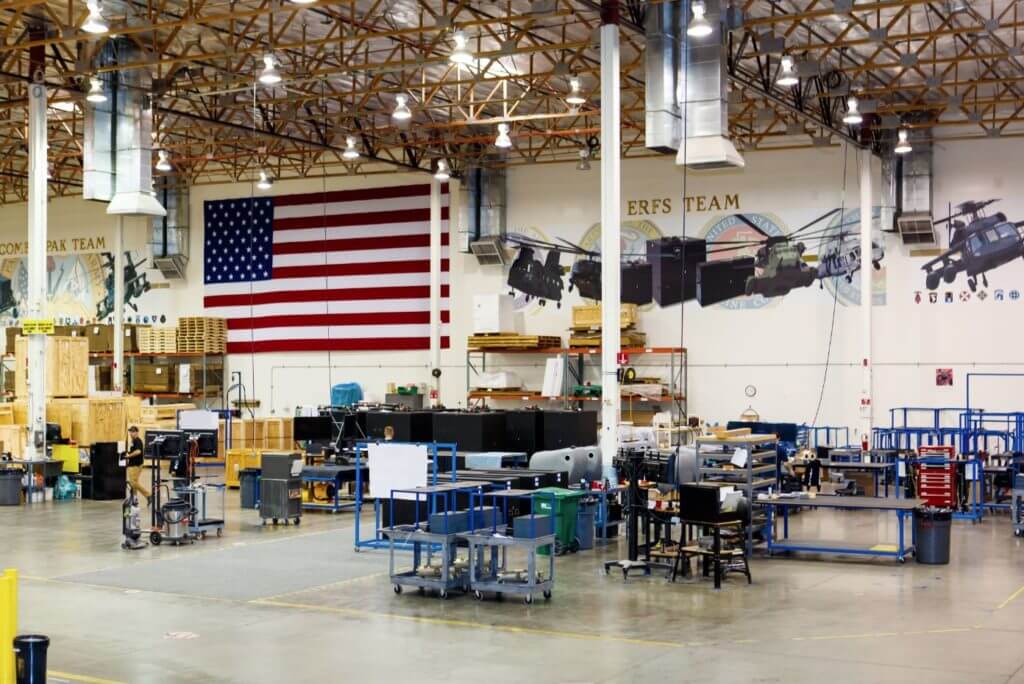
Robertson Fuel Systems was founded in 1976 by Dr. S. Harry Robertson, a pilot whose pioneering work in developing crashworthy fuel systems was informed by the U.S. military’s experience with post-crash fires in Vietnam. The company has historically focused its efforts on military helicopters, and its fuel tanks are currently installed on U.S. Army Black Hawks, Chinooks, and Apaches, among other platforms. The company also produces Forward Area Refueling Equipment, which, along with Robertson’s crashworthy auxiliary fuel tanks, supported the raid on Osama bin Laden’s compound in Abbottabad, Pakistan, in 2011.

A warehouse at Robertson’s Tempe facility contains material from decades of development and certification testing. Robertson had done some preliminary engineering on an AS350 CRFT years ago for military competition, but shelved the project until separate project cooperation with StandardAero presented an opportunity to tap into that company’s STC development expertise, prompting Robertson to revisit the tank in the context of increasing public attention on post-crash fires. Arriving at the final design proved more challenging than the engineering team had expected. Initially, they had planned on using a roto-molded plastic container for the tank, but when it became clear that this wouldn’t pass Federal Aviation Administration (FAA) certification testing, they switched to the current composite shell, strategically designed to help distribute impact loads in a crash.

For certification, Robertson and StandardAero drop tested their H125/AS350 CRFT in an actual aircraft structure, with the landing gear removed and an Airbus cargo swing and Onboard Systems cargo hook installed. According to Robertson director of engineering Bill York, it took “many, many iterations of containers and sump plates” to arrive at a design that could withstand the penetrating force of the swing and cargo hook. While working through these hard problems, Robertson manufactured its own, less expensive cargo swings in-house for use in development drop testing.

The concrete pad where Robertson conducts its drop tests. The FAA requires that tanks be dropped from a height of 50 feet while 80 percent full of water (approximating the mass of the tank full of jet fuel, which has a lighter density than water). The U.S. military generally stipulates that tanks be dropped full of water from at least 65 feet, but does not require that they be dropped in a representative aircraft structure.

The table that Robertson uses for its “slosh and vibe” tests. Driven by hydraulics and electric motors, the entire table tilts back and forth to simulate the motion of an aircraft in flight, which creates “sloshing” in the fuel tanks being tested. Adjustable eccentric weights attached to the motors are used to create vibration that mimics the vibration of a helicopter. Each fuel tank design undergoes around 25 hours of this slosh and vibe testing.

Robertson makes the composite container for the H125/AS350 CRFT in-house using pre-impregnated carbon fiber and fiberglass. In the past, Robertson has outsourced production of its fuel bladders, but it is now developing that capability in-house, starting with bladders for several military models (not shown). The bladders, which are made from a synthetic rubber-like material, are laid up and over-cured much like other composites. Robertson makes test coupons for each composite container and bladder, so that it can track manufacturing quality long after each product is shipped.
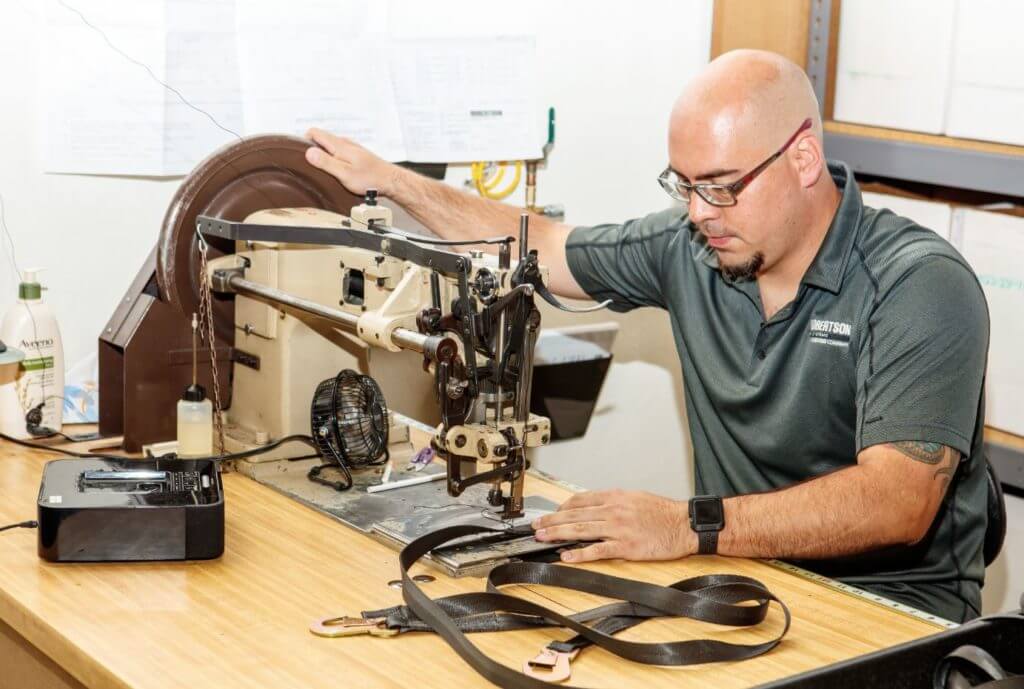
A technician at work in Robertson’s rigging and harness shop. The H125/AS350 CRFT is attached to the aircraft using two proprietary straps that are especially strong and durable.

The hose assembly department at Robertson’s Tempe facility. All hoses are pressure-tested following assembly.

The tank assembly process. Because production volumes in the aviation sector are relatively low compared to other industries, Robertson sees little benefit to greater automation, and its manufacturing remains high-touch. Robertson employs more than 150 employees across its facilities in Tempe and Bluffdale, Utah.

After each tank is assembled, it is connected to this unit for acceptance testing, which checks for leaks and ensures correct gauging and pump operation. Each acceptance test usually lasts between one and one-and-a-half hours, and uses a special solvent, rather than jet fuel, for safety and environmental reasons.
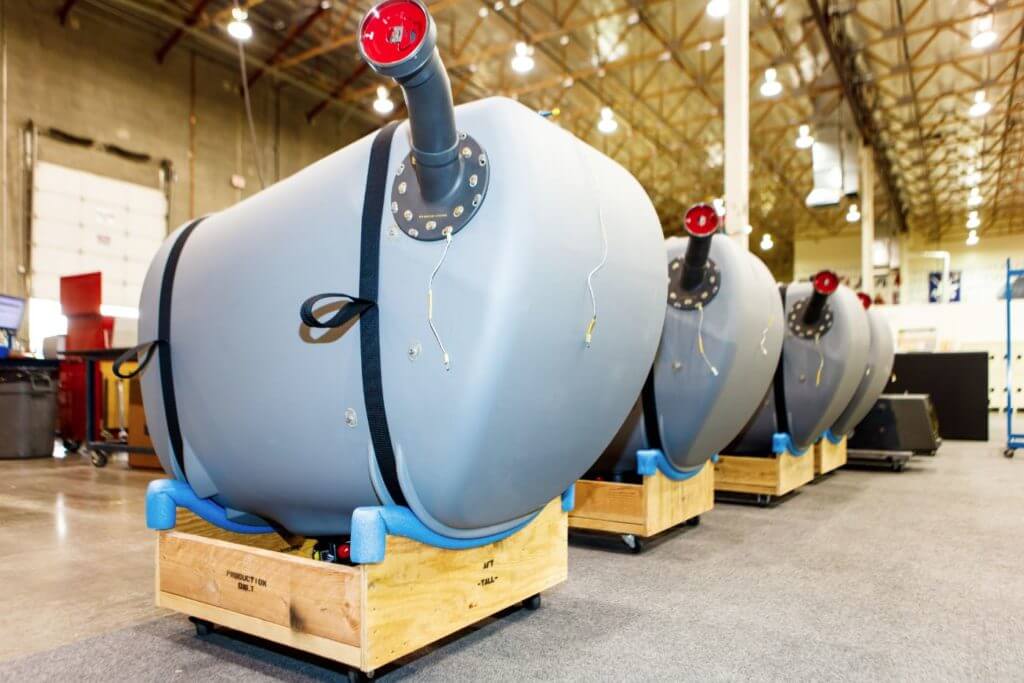
A row of H125/AS350 CRFTs on Robertson’s shop floor, with their military-standard high-pressure, crashworthy, lightning-safe fuel caps visible. Immediately following certification of the tank, the company developed a backlog as it worked to ramp up its production capabilities and fulfill the large order from launch customer Air Methods. However, Robertson has since reduced wait times to just two or three months. The company is now producing around 10 to 15 of the tanks per month, and could increase that number if demand dictated. (Note that the straps on these tanks are for ease of handling, and are not the straps that attach the tank to the aircraft.)
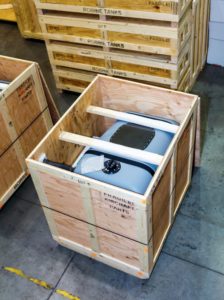
A crated fuel tank ready for delivery to the customer. Elvis Moniz, StandardAero VP of business development for airframes and avionics, said that he’s seeing interest in the H125/AS350 CRFT from all sectors of the helicopter industry – from police and EMS operators, to private owners who are “concerned about taking care of themselves.” To date, 145 CRFTs have been delivered to customers in the United States, Guatemala, Australia, and Europe.





